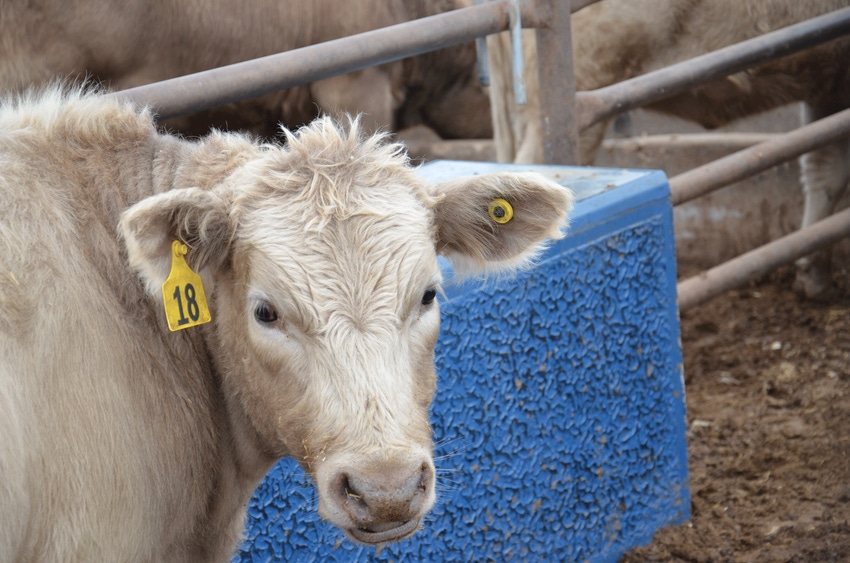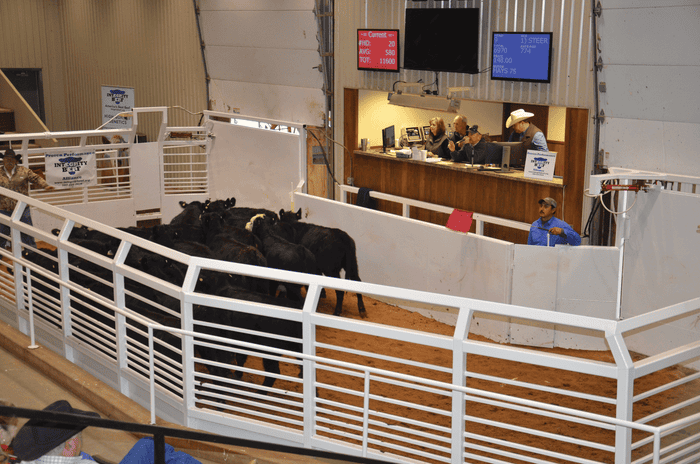USDA official ID to be RFID ear tag
USDA is making good on its promise to move forward with enhanced disease traceability.
June 24, 2019

“We have some of the very largest retailers telling fruit and vegetable growers all over the world that they want traceability in the system within the next 12 months. If they are successful in the produce industry in driving that forward, I think it’s very likely that the meat industry is the next place they’re going to look: to want and demand traceability for products that are going to move into their retail outlets.”
That’s the sobering news that Gregory Ibach, USDA undersecretary of agriculture for marketing and regulatory programs, delivered at the recent annual meeting of the National Institute of Animal Agriculture (NIAA).
That’s also one of the reasons chatter and efforts surrounding USDA’s Animal Disease Traceability (ADT) program gained steam in the last couple of years. More pressing is the growing recognition of the livestock industry’s vulnerability — especially cattle — to the ravages of a foreign animal disease (FAD) such as foot-and-mouth.
Today, it can take days, weeks and even months to track disease origins to specific cattle. Think here of investigations of cattle infected with such diseases as bovine tuberculosis or BSE. If a virulent FAD turns up in the U.S., preserving animal welfare and economic viability requires tracking cattle much faster and places a premium on accuracy.
USDA starts the clock
USDA took another step toward enhancing this ability for the nation’s mandatory ADT program by requiring official electronic radio-frequency identification (RFID) ear tags for identification as of Jan. 21, 2023.
Note, ADT currently applies to sexually intact beef cattle 18 months of age or older that are moved interstate, unless otherwise exempted.
“While there are several steps USDA needs to take in order to strengthen its traceability system, the most essential one is to move from metal identification tags to electronic identification tags in beef and dairy cattle, as well as in bison,” according to an April fact sheet from the USDA Animal and Plant Health Inspection Service (APHIS).
Since ADT became a law in 2013, compliant identification has included a variety of tag types from USDA-approved vendors. These official tags carry the USDA shield and comply with official numbering systems. Tag types include visual dangle tags, electronic ear tags and metal brite tags.
USDA provided the metal tags to producers free of charge, and it will continue to do so through the end of this year. They’re being phased out of the program, though, to increase the speed and accuracy of identifying and tracking cattle.
“While electronic identification is critical for modernizing animal disease traceability, USDA understands this represents a big change for the industry and individual producers. Even though implementation of electronic identification is still several years away, USDA is committed to supporting producers as they transition from metal to RFID tags,” according to the USDA fact sheet.
Diving into details
Details are still being ironed out, but the notion is that USDA will pay a third of the cost, with states and producers covering the balance. As well, USDA is working with states to provide critical infrastructure funding for such things as electronic readers at auction markets.
ADT also requires animals covered by the law to move with an interstate certificate of veterinary inspection (ICVI). USDA is modernizing its information technology systems to facilitate electronic ICVIs, according to Dr. Jack Shere, U.S. chief veterinary officer.
Moreover, USDA APHIS rolled out an interactive online map to simplify the process by which producers obtain a premises identification number (PIN), which is required to purchase official tags for ADT. You can find ADT information at bit.ly/aphisadt.
RFID technology
Regarding the RFID tags at the NIAA meeting, Shere emphasized USDA is leaving it to the industry and market to decide which specific technology or technologies to use.
“As long as low-frequency works, well keep it. As long as high-frequency works, we’ll keep it,” Shere said at the NIAA meeting. “It’s going to depend on what the producer needs to do his work, how we functionally adapt to that and what the industry is asking for.”
Current pilot projects among USDA and industry partners should provide further insight. For instance, the one in Texas will begin examining the potential of high-frequency back tags, which might address the challenge of tagging and tracking calves and feeder cattle at auction markets, if and when those cattle become part of ADT.
Understanding the why of ADT
Arguably, cow-calf producers have so far been the most reluctant sector of the cattle business to collectively support a standardized ID and tracking system. Previous starts and stops made by the government with ID likely have something to do with that. As always, concerns prevail relative to government intrusion, privacy, data confidentiality and liability.
Regarding the latter, according to “Cattle Traceability: Potential Legal Implications,” by Elizabeth Rumley of the National Agricultural Law Center at the University of Arkansas and Tiffany Dowell Lashmet of Texas A&M (University) AgriLife Extension Service: “A system of animal identification and traceability will not, on its own, expand the liability that a producer is exposed to.
“If practices are employed that eventually injure someone else, the livestock producer responsible for creating that threat has always been potentially liable.” Think here of things like ignoring withdrawal times, or using illegal drugs.
Instead, Rumley and Dowell Lashmet say a more robust traceability system helps identify individuals who have been part of the chain of custody for particular animals.
“This identification increases the accountability for individuals who until now have sometimes been anonymous,” explain Rumley and Dowell Lashmet. “This makes it easier to determine who potentially mismanaged the animal, which can lead to increased liability exposure for that person or entity.”
As long as a producer is doing things right, one could argue that increased traceability provides protection against someone else in the chain doing something wrong.
With all of this in mind, USDA is developing a plan to communicate the importance of ADT to cow-calf producers.

“Late this summer, USDA hopes to have modules that USDA can use in working with animal health officials and with trade groups to go into states and counties and talk about what ADT means to a cow-calf producer,” Ibach explained.
The purpose? “To help a cow-calf producer in the Sandhills of Nebraska, for example, understand that if we have foot-and-mouth disease in Kansas, he’s not immune to a stop-movement order that might be nationwide, if we aren’t able to identify where the disease originated or how far it spread. Maybe that means in the month of October, he won’t be able to take the asset he has in his calf crop and convert it to cash … until we can lift the stop-movement order.
“Anything we can do to show that he’s not part of the disease chain or disease risk makes it a quicker process for us to be able to release his operation into interstate commerce,” Ibach said.
Implementation timeline, RFIDs
USDA will require official radio-frequently identification ear tags for compliance with the nation’s mandatory Animal Disease Traceability program as of Jan. 21, 2023.
Dec. 31, 2019. USDA will discontinue providing free metal tags. However, approved vendors will may still produce official metal tags for one additional year. Approved vendor tags will be available to buy on a state-by-state basis as authorized by each state animal health official through Dec. 31, 2020.
Jan. 1, 2021. USDA will no longer approve vendor production of metal ear tags with the official USDA shield. Accredited veterinarians and producers can no longer apply metal ear tags for official identification and must start using official RFID tags only.
Jan. 1, 2023. To comply with ADT, RFID ear tags will be required for sexually intact beef cattle 18 months of age or older that are moved interstate, unless otherwise exempted. Animals tagged with metal ear tags will have to be retagged with RFID ear tags to move interstate. Feeder cattle and animals moving directly to slaughter are not subject to RFID requirements.
— Adapted from the USDA fact sheet “Advancing Animal Disease Traceability: A Plan to Achieve Electronic Identification in Cattle and Bison”
About the Author(s)
You May Also Like


.png?width=300&auto=webp&quality=80&disable=upscale)


